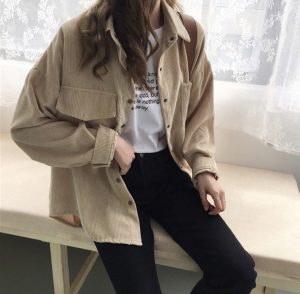“The Rise of Eco-Friendly Clothing: A Sustainable Fashion Revolution”

Title: The Rise of Eco-Friendly Clothing: A Sustainable Fashion Revolution
Introduction:
In recent years, the fashion industry has undergone a significant shift towards sustainability, with eco-friendly clothing emerging as a driving force in shaping a more ethical and environmentally conscious approach to fashion production and consumption. This sustainable fashion revolution reflects a growing awareness of the environmental and social impacts of conventional fashion practices and a collective effort to promote more responsible and eco-friendly alternatives.
Environmental Awareness:
The rise of eco-friendly clothing is fueled by a growing awareness of the environmental impact of the fashion industry. From water pollution and deforestation to carbon emissions and textile waste, conventional fashion practices have contributed to significant environmental degradation. Consumers are increasingly concerned about the ecological footprint of their clothing choices and seek alternatives that minimize harm to the planet.
Ethical Sourcing and Production:
Eco-friendly clothing prioritizes ethical sourcing and production practices, ensuring that garments are made in ways that respect human rights, labor rights, and animal welfare. Sustainable fashion brands prioritize transparency and accountability throughout the supply chain, from raw material sourcing to manufacturing and distribution. Fair trade certifications, organic certifications, and animal welfare standards are common indicators of ethical and sustainable practices in eco-friendly clothing.
Sustainable Materials:
One of the hallmarks of eco-friendly clothing is the use of sustainable materials that minimize environmental impact and promote resource conservation. Organic cotton, hemp, bamboo, and recycled fibers are among the most widely used sustainable materials in eco-friendly clothing. These materials are grown and harvested using environmentally friendly practices, such as organic farming and water-saving techniques, and reduce reliance on harmful pesticides and synthetic chemicals.
Circular Fashion Economy:
Eco-friendly clothing embraces the principles of a circular fashion economy, where garments are designed, produced, and disposed of in ways that minimize waste and maximize resource efficiency. Recycling, upcycling, and garment recycling programs are common strategies employed by sustainable fashion brands to extend the lifecycle of clothing and reduce the burden on landfills. By promoting repair, reuse, and recycling, eco-friendly clothing contributes to a more sustainable and circular fashion ecosystem.
Consumer Awareness and Engagement:
The rise of eco-friendly clothing is also driven by increased consumer awareness and demand for sustainable fashion options. Social media, digital platforms, and conscious consumer movements have empowered individuals to advocate for ethical and eco-friendly practices in the fashion industry. Consumers are actively seeking out brands that align with their values and support sustainable and transparent business practices.
Conclusion:
The rise of eco-friendly clothing represents a transformative shift in the fashion industry towards sustainability, ethics, and environmental stewardship. By prioritizing ethical sourcing, sustainable materials, and circular fashion principles, eco-friendly clothing offers a more responsible and conscientious approach to fashion production and consumption. As consumer demand for sustainable fashion continues to grow, eco-friendly clothing will play an increasingly important role in shaping the future of the fashion industry and promoting a more sustainable and equitable world.






